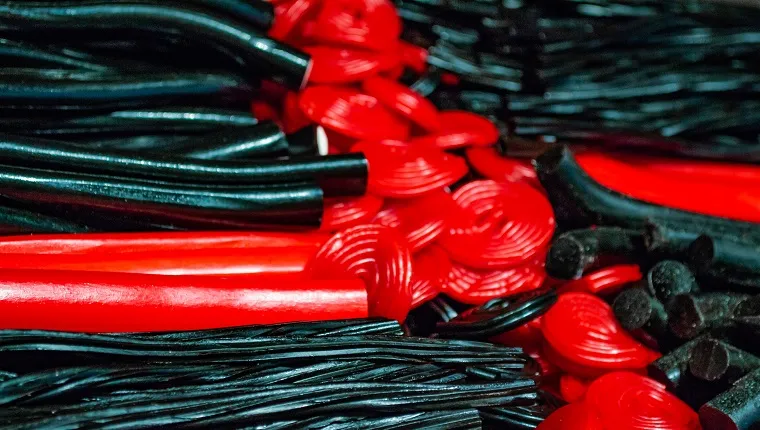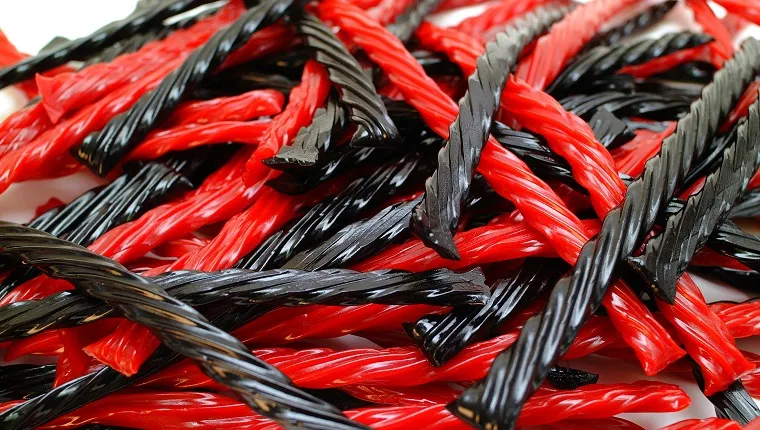Can dogs eat licorice? Twizzlers and Red Vines are beloved by humans, and dogs certainly show interest in them, too. But is licorice safe for dogs to consume?
The short answer is no; black licorice doesn’t have enough health benefits to be worth the risk, and red licorice has no health benefit at all. In the case of black licorice, the nominal health benefit is even canceled out by a toxic compound. Plus, both are far too sugar-dense for dogs.
We recommend having a thorough discussion with your veterinarian regarding candy of any kind for your dog. They’ll give it to you straight. In the meantime, here’s what you should know about why licorice is a bad idea for dogs.
Why Is Licorice Bad For Dogs?
Both kinds of licorice, black and red, are a huge risk for dogs in different ways.
Now, you may note that black licorice has medicinal properties, but that isn’t entirely accurate. Black licorice is only flavored with extract from the licorice plant.
The plant itself definitely has medicinal properties used for upset stomachs and sore throats. But the amount that ends up in commercially manufactured candy just isn’t relevant.
Furthermore, licorice root can be toxic to dogs in large quantities. It contains a compound called glycyrrhizin, which causes spikes in blood pressure.
As for red licorice, it isn’t flavored with licorice root at all. There’s no chance of any kind of health benefit, whatsoever. It’s just pure sugar for your dog.
Sugar, in the case of black and red licorice, other forms of candy, and even fruits, is a bad idea for dogs. With fruits that carry additional nutritional benefits, exceptions can be made in moderation.
But loads of sugar on its own cause obesity, diabetes, and tooth decay, with dogs more susceptible than humans.
What Should I Do If My Dog Eats Licorice?

Dogs have a tendency to get into all kinds of things they’re not supposed to. Most dog parents have had some kind of candy-related scare. Those sweet smells are difficult to resist!
In most cases, a small amount of licorice, like a stray piece on the floor, won’t be cause for alarm. You’ll just want to keep an eye on them for stomach upset and diarrhea.
But, if your dog gets into a whole package of licorice or any candy that contains licorice root, contact your vet immediately. Then, keep an eye out for signs of glycyrrhizin toxicity (for black licorice):
- Blood Pressure Spikes;
- Muscle Weakness;
- Vomiting
It’s important to consider the candy wrapper, too. If your dog potentially consumed part of one, you’ll want to report this to your vet, as well.
Any kind of candy wrapper consumed by your dog has the potential to cause bowel obstructions. Keep an eye out for the following signs:
- Abdominal Pain
- Diarrhea
- Difficulty Passing Stool
- Lethargy
- Vomiting
Has your dog ever accidentally eaten licorice? Did they feel sick afterwards? Let us know in the comments below.









